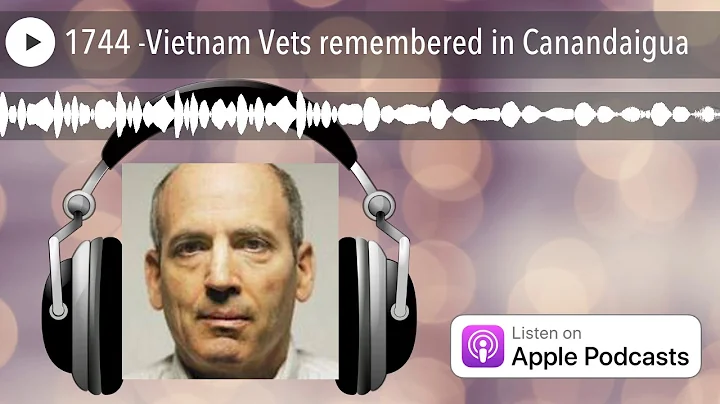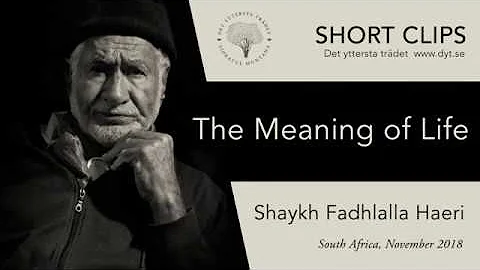Discover the Richness of the Māori Language in New Zealand
Table of Contents
- Introduction
- The Maori Language: An Overview
- Maori in New Zealand
- Maori and the Austronesian Language Family
- Relationship with Hawaiian and Tahitian
- Historical Significance of Maori
- Maori as the Predominant Language in New Zealand
- Decline of Maori and Rise of English Speakers
- Impact of European Settlement on Maori Population and Language
- The Revival of Maori Language
- Language Revival Movement in the 1980s and 90s
- Current Energies and Interest in Revival Efforts
- Basic Maori Phrases and Pronunciation
- Features of Maori Pronunciation
- Maori Alphabet and Vowel Sounds
- Diphthongs and Long Vowels
- Syllable Structure and Consonant Clusters
- Sentence Structure and Word Order in Maori
- Basic Word Order: Predicate-Subject
- Verb Forms and Tenses in Maori
- Personal Pronouns and Possessives
- Demonstrative Adjectives and Pronouns
- Efforts to Preserve and Promote Maori Language
- Kohanga Reo: Immersion Early Childhood Education
- Maori Immersion and Bilingual Schools
- Enrollment and Revitalization Challenges
- The Future of Maori Language
- Conclusion
The Maori Language: Preserving a Cultural Heritage 🌱
The Maori language, also known as te reo Maori, holds a special place in the cultural tapestry of New Zealand. While English may be the predominant language in the country, Maori, as an official language, carries historic significance and deep-rooted traditions. In this article, we will delve into the world of the Maori language, exploring its origins, historical significance, revival efforts, and the challenges it faces in the modern era.
Introduction
New Zealand, a picturesque land known for its natural beauty and unique wildlife, is home to a diverse population. Among the various communities that contribute to the country's multicultural fabric, the Maori people hold a prominent position. Central to their identity is the Maori language, which has played a vital role in the preservation of their cultural heritage. Despite facing challenges over the centuries, the Maori language continues to persist and revive, highlighting the resilience of the Maori people and their commitment to their linguistic traditions.
The Maori Language: An Overview
Maori in New Zealand
The Maori language, often simply referred to as te reo Maori, is the ancestral tongue of the indigenous people of New Zealand, the Maori. It holds the status of an official language in the country, alongside English. While English is predominantly spoken, Maori remains an integral part of New Zealand's cultural landscape.
Maori and the Austronesian Language Family
Linguistically, Maori belongs to the wider Austronesian language family. Specifically, it falls under the Eastern Polynesian branch, which also includes languages like Hawaiian and Tahitian. This linguistic connection facilitates mutual intelligibility to some extent among these Pacific Island languages.
Relationship with Hawaiian and Tahitian
Maori's closest linguistic relative is Tahitian, another Eastern Polynesian language. The similarities between the two languages are evident in vocabulary, grammar, and pronunciation. Consequently, speakers of Maori often find it easier to comprehend and learn Tahitian. While Hawaiian falls under the same Eastern Polynesian branch, the linguistic divergence from Maori is somewhat greater.
Historical Significance of Maori
Maori as the Predominant Language in New Zealand
Prior to the arrival of European settlers in the late 1700s, Maori was the main language spoken throughout New Zealand. Both the northern and southern islands of the country were home to vibrant Maori communities, fostering a rich oral tradition that conveyed their history, customs, and beliefs.
Decline of Maori and Rise of English Speakers
The subsequent influx of European traders, missionaries, and settlers had a profound impact on the Maori population and their language. Tragically, diseases introduced by the Europeans and intertribal conflicts took a toll on the Maori community, resulting in a major decline in population. Simultaneously, the English-speaking population steadily grew, with English speakers eventually outnumbering Maori speakers.
Impact of European Settlement on Maori Population and Language
The Native Schools Act of 1867 marked a significant turning point in the linguistic landscape of New Zealand. The act established a system of primary schools for Maori children, where instruction was conducted entirely in English. This deliberate shift aimed to assimilate Maori children into English-speaking society, further marginalizing the Maori language and accelerating its decline. Nevertheless, many Maori individuals continued speaking their ancestral language within their homes until urbanization and migration patterns led to a shift in language usage.
The Revival of Maori Language
Language Revival Movement in the 1980s and 90s
In the 1980s and 90s, a language revival movement gained momentum in New Zealand. Fueled by a growing sense of cultural pride and a desire to reclaim their linguistic heritage, Maori communities embarked on efforts to preserve and revitalize the Maori language. Advocacy groups, educational initiatives, and community-driven projects played a pivotal role in promoting the use of Maori within families, schools, and public spaces.
Current Energies and Interest in Revival Efforts
In recent years, there has been a renewed energy and interest behind the revival of the Maori language. The current Prime Minister of New Zealand, Jacinda Ardern, has set an ambitious goal of achieving one million Maori speakers by 2040. Furthermore, she intends to raise her daughter as a bilingual English-Maori speaker. These initiatives, along with various language revitalization programs embedded within the education system, aim to increase the number of fluent Maori speakers and secure the future of the language.
Basic Maori Phrases and Pronunciation
To gain a better understanding and appreciation of the Maori language, let's explore some basic phrases and delve into the intricacies of Maori pronunciation and orthography.
(Heading 5 - Basic Maori Phrases and Pronunciation)
Understanding the fundamentals of Maori pronunciation is essential for grasping the beauty and nuances of the language. Maori features a relatively small alphabet consisting of 8 consonants and 5 vowels. Let's take a closer look at the pronunciation of these sounds and explore their unique characteristics.
Consonant Sounds
- k: Pronounced as a voiceless velar plosive, similar to the sound in "kite."
- m: Produced by bilabial nasal airflow, similar to the sound in "moon."
- n: Represented by an alveolar nasal sound, as in "noon."
- p: Articulated as a voiceless bilabial plosive, resembling the sound in "poke."
- r: This letter has a distinct Maori sound, known as a rolled or tapped alveolar trill.
- t: Pronounced as a voiceless alveolar plosive, similar to the sound in "top."
- w: Indicates a voiced labiodental approximant, akin to the sound in "wet."
- ng: Represents a velar nasal sound, similar to the "ng" in the word "song."
These consonant sounds provide the foundation for Maori pronunciation, and each contributes to the unique cadence and rhythm of the language. It's important to note that there are variations in pronunciation, but the examples given above represent the most common usages.
Vowel Sounds
Maori has five vowels, each represented by a specific letter:
- a: Pronounced as a "uh" sound, similar to the "a" in "about."
- e: Represents a short "eh" sound, as in "bet."
- i: Denotes a short "ee" sound, similar to the vowel in "see."
- o: Pronounced as a short "oh" sound, resembling the vowel in "book."
- u: Indicates a short "oo" sound, as in "put."
These vowel sounds are integral to Maori pronunciation and play a crucial role in conveying meaning and tone within the language. While there may be slight variations in pronunciation, acclimating to these essential vowel sounds will greatly enhance one's ability to express themselves in Maori.
Diphthongs and Long Vowels
In addition to the basic vowel sounds, Maori includes diphthongs and long vowels, which add depth and richness to the language. Diphthongs are vowel sequences consisting of two different vowel sounds that remain distinct. In Maori, the following diphthongs can be observed:
- ae: Pronounced as a diphthong "eye-eh," as in the word "bye."
- ai: Represented by the diphthong "eye," similar to the vowel sounds in the word "wide."
- ao: Indicates a diphthong "ow," resembling the sound in the word "now."
- au: Pronounced with a diphthong "ow," similar to the sound in the word "how."
- ei: Denotes a diphthong "ay-ee," as in the sound in the word "eight."
- eu: Represents a diphthong "eh-oo," reminiscent of the sound in the word "feud."
These diphthongs contribute to the melodic quality of Maori speech and add a unique flavor to the language. It's worth noting that slight variations in pronunciation may occur, and some diphthongs may exhibit generational differences.
Maori also features long vowels, which are denoted by a macron (ā, ē, ī, ō, ū) placed above the vowel letter. The macron indicates an extended or elongated pronunciation of the respective vowel, and its presence can significantly alter the meaning of a word. For instance, "kōko" means "tui," a type of bird, while "kōko" translates to "shovel." Paying attention to these long vowel distinctions is essential for accurate and precise communication in Maori.
Syllable Structure and Consonant Clusters
One intriguing aspect of Maori is its syllable structure. In Maori, all syllables end in a vowel sound. For instance, the word "tāngata" translates to "man," "tamariki" means "child." This unique characteristic grants Maori its musical and rhythmic quality, making it a delight to hear and speak.
However, unlike English, Maori does not allow consonant clusters within words. Consonant clusters, such as "spl" in "splash" or "str" in "street," are not found in the Maori language. This limitation reinforces the syllable-centric nature of Maori pronunciation.
Understanding the intricacies of Maori pronunciation and orthography sets the stage for appreciating the language's beauty and effectively engaging with its speakers. By embracing these fundamentals, learners can strive for greater fluency and cultural connection within the Maori community.
To continue reading, head over to Part 2 of this article, where we explore the historical significance of the Maori language and its decline in the face of European settlement.
(Resource: Langfocus YouTube Channel)
Pros:
- Provides a comprehensive overview of the Maori language
- Highlights the historical significance of Maori and its decline
- Explores the language revival movement and current efforts to preserve Maori
- Offers insights into Maori pronunciation, sentence structure, and word order
- Discusses the challenges and future of the Maori language
Cons:
- Requires supplementary resources for in-depth language learning
Highlights
- The Maori language is an official language of New Zealand and holds cultural significance.
- Maori belongs to the Austronesian language family and has similarities with Hawaiian and Tahitian.
- Maori was the predominant language in New Zealand until European settlers arrived.
- The decline of Maori was influenced by European colonization and the introduction of English-speaking communities.
- The Maori language revival movement gained momentum in the 1980s and 90s and continues today.
- Basic Maori phrases and pronunciation features were covered, including vowel sounds, diphthongs, and long vowels.
- Maori sentence structure follows a predicate-subject word order and does not conjugate verbs for person and number.
- Efforts are underway to preserve and promote Maori through early childhood education programs and immersion schools.
- The future of the Maori language depends on enrollment in language revitalization programs and community support.
FAQs
Q: Are there any similarly endangered languages in other countries?
A: Yes, there are numerous endangered languages around the world. For example, the indigenous languages of Australia, such as Warlpiri and Arrernte, face similar challenges. Efforts are being made to revitalize these languages through education and community initiatives.
Q: How can I learn more about the Maori language?
A: To delve deeper into learning Maori, consider enrolling in language classes provided by Maori cultural centers or educational institutions. Online resources, language exchange programs, and immersion experiences can also provide valuable learning opportunities.
Q: What are some resources for learning Maori?
A: Here are some resources to get started with learning Maori:
- "Te Hikuwai: Launch Yourself Into Maori Language" by Ian Cormack
- "Te Whanake" series by John Moorfield
- Online courses and resources provided by Te Wananga o Aotearoa and Te Whare Wananga o Awanuiarangi.
(Resource: Langfocus YouTube Channel)







